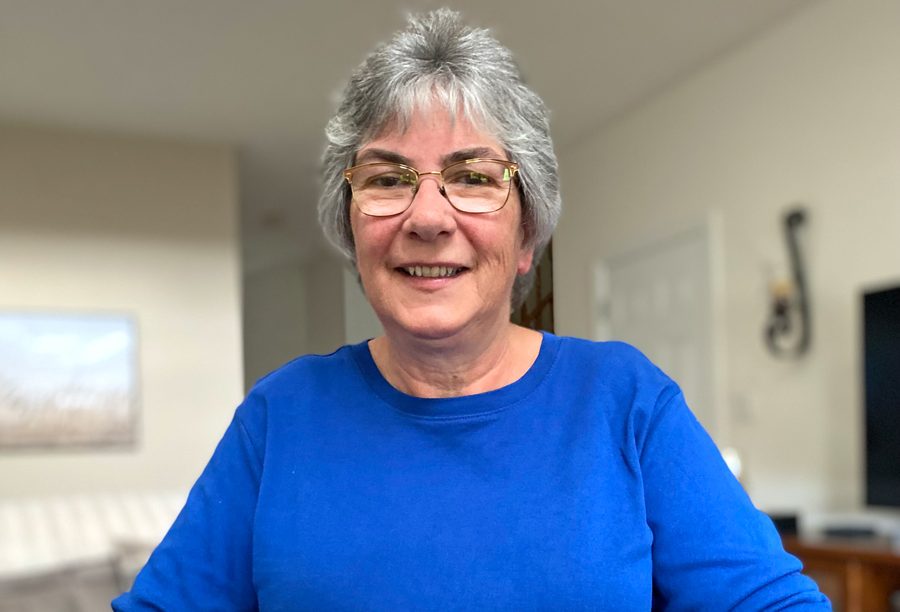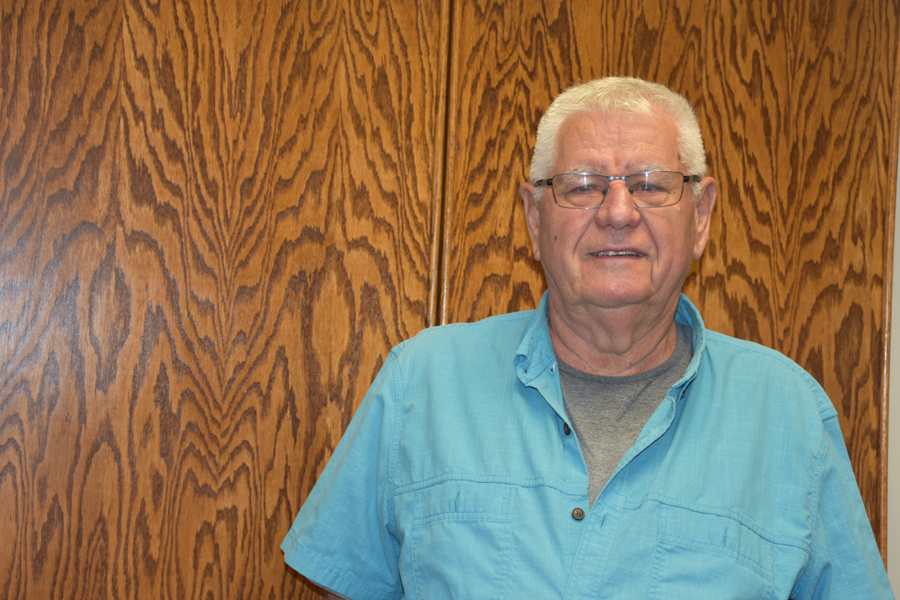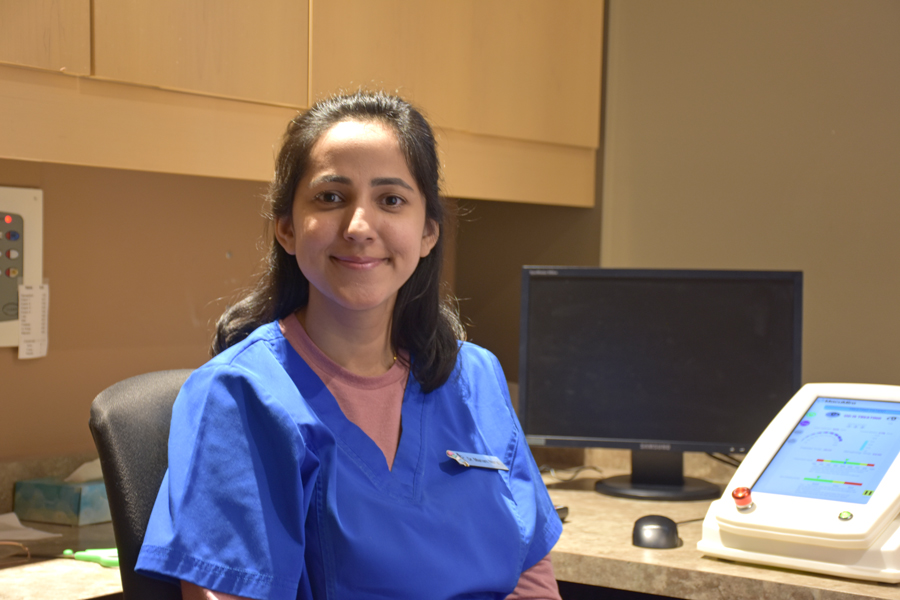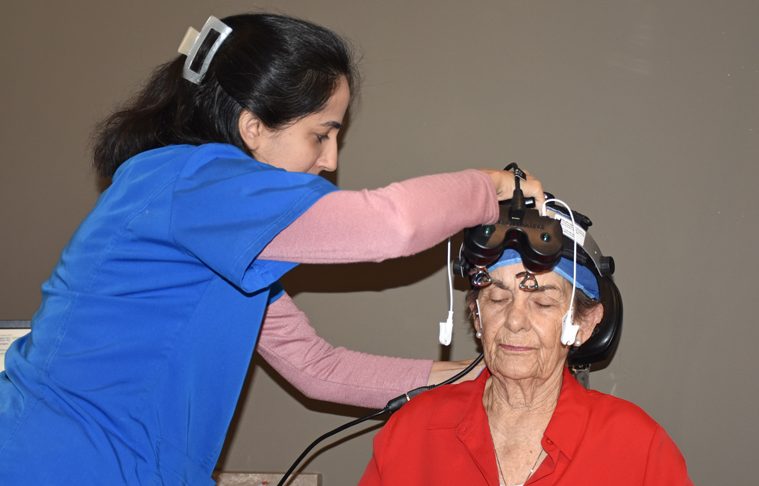FERGUS – Lenore Prickett was all ears when she learned a treatment that could reverse blindness for people with dry age-related macular degeneration (AMD) had been developed and was soon to be approved by Health Canada.
Prickett, who lives in Fergus, has dry AMD, a degenerative disease that develops when the macula gets thin and dry.
The macula is the central part of the retina and is responsible for seeing fine details, such as those required when reading.
People with dry AMD gradually lose their vision as the macula gets thinner, and clumps of waste by-product start to accumulate.
Dry AMD can turn into wet AMD. This is when new, abnormal blood vessels grow under the retina. They may leak blood or other fluids and cause scarring of the macula.
In both cases, patients lose their vision enough to be considered legally blind. AMD accounts for 90% of legal blindness among the general population.
And until now, there have been almost no treatments for dry AMD.
Optometrists will often prescribe vitamin supplements, which have a nominal benefit.
But a new treatment, called MacuMira, has been developed. It emits pulsing micro currents into the macula and that stimulates vision.
In clinical trials, all patients experienced improved vision and were clamouring for follow-up treatment.
It was approved by Health Canada in October of 2022, went back to the research team for some improvements, and went to market in 2023.
Dr. Mariam Nahal, an optometrist at Upper Grand Eye Care in Fergus, was among the first in Ontario to introduce the new therapy into her practice last March.
And Prickett is among the first of Nahal’s patients to receive the treatment.
Lenore Prickett
Prickett, 87, said her central vision had started to go wonky.
“Everything was crooked and jig jags. Letters and words would jump around when I tried to read. I wondered why all my neighbours installed their windows crooked,” she said wryly.
“Now that I’ve had the treatments, those things have cleared up.”
Her initial series of treatments started in April – four 32-minute treatments over 10 days and then follow-up treatments every two to four months.
During a treatment session in September, Nahal placed special headgear on Prickett’s head, connected the device to a tablet, and observed while micro currents pulsed on Prickett’s closed eyes – alternating 40 seconds on each eye for 32 minutes.
“You can feel it but there’s no pain,” Prickett said. “You just sit, close your eyes and wait. It’s easier than going to the dentist.”
Prickett lives in south Fergus with her husband, who has dementia.
“It was essential for me to get this treatment,” she said, adding her greatest fear about losing her vision was to lose her driver’s licence.
“I really wanted it. And I can see. I’m very excited. I never thought it would be right here in Fergus.”
Laura Collins

LAURA COLLINS
“It’s quite terrifying to go blind,” said Laura Collins, who lives in Wasaga Beach.
“I knew it was getting worse. I had no central vision in my right eye and now my left eye was starting. And all the optometrist could say was take these supplements and come back and we’ll see.”
Collins had her first treatment at the Fergus clinic on May 2.
She experienced central vision loss, and could identify hair but not a face, she said.
But after that first session, “I could see the forehead, more of the face.
“And things are so much brighter. Before it always felt like there was a huge cloud.”
It’s a distance for Collins to come to Fergus and it will be worse in the winter.
But for her, Fergus is the closest place to home that offers the treatment.
“It’s not a cure, it’s a treatment.
“It improves your vision but you have to continue to do it, otherwise you will go back.
“The problem is you have to pay for it. And it’s $500 per treatment,” she said.
At 61, Collins is pretty young to have AMD. Over time, a black spot in the middle of her eye became larger and her vision was impaired.
She worked on a computer and had to retire early because she couldn’t see the screen anymore.
Now, with a few treatments, she can see, she can drive and she’s ready to advocate for the Ministry of Health to have MacuMira covered by OHIP.
“We need to get it out there – the government needs to kick in.
“This is not a hoax. It’s approved to use, and it works,” she said.
Lloyd McMillan

LLOYD MCMILLAN
Lloyd McMillan, 73, was 55 when he was diagnosed with AMD and he’s taken part in studies and clinical trials over that time hoping for a cure.
He can’t drive – his wife Liz is now the chauffeur – although he recently bought an e-bike that allows him to noodle around Belwood, where the couple lives.
He started MacuMira treatments in April.
“I feel like a Guinea pig, but I do feel I’m getting help which is important.
“And I’m getting closer to where I need to be to drive,” he said.
“I don’t think I’ll ever get to 20/20, but even if I can keep what I’ve got, that’s an improvement.”
Dr. Mariam Nahal
Dr. Nahal is convinced the MacuMira treatment is a plus for the health system in general.
She learned about the treatment in 2022, started training for it in 2023, and began offering treatments in March.
“I didn’t advertise it; I hand-picked the patients (for the initial treatments),” she said.
“It was so new and there were no long-term studies. Patients had a lot of questions. There was a lot of uncertainty.
“But as more patients have the treatment, there is more confidence.
“About 20 of my patients have been treated and all have had a positive outcome.”
Nahal added a vision therapy clinic to her practice in 2024, which has all sorts of positive implications for her patients and her business.
She can now treat children with turned eye and vision-related learning disabilities, adults with acquired brain injury or stroke, and the MacuMira treatment.
She’s an early adapter. Other doctors have been hesitant to add the treatment to their portfolios.

Dr. MARIAM NAHAL
“You need space in your office. You need to train and purchase the equipment. There are documents to be signed. It takes some handholding. You have to do it properly,” Nahal said.
“But this is something we can do. Watching your patients’ vision decrease is very emotional. This is very promising.”
There is treatment for wet AMD – an injection directly into the retina. It has to be done every few months and the cost of $1,500 to $1,700 per injection is covered by OHIP.
It also has to be administered by an ophthalmologist – an eye surgeon – because it’s an invasive treatment.
“If we can control AMD at the dry stage, we can fix or slow the progression. And that’s better for the healthcare system as a whole,” said Nahal.
She added the dry treatment allows people to maintain their independence and not rely on other government-funded social or health care services.
“It’s nice to have another tool in the toolbox. All these years and there’s really nothing we could do as doctors but tell them to take vitamins and wear sunglasses,” said Nahal.
“So there’s a lot on interest in this machine and a fair amount of doctors waiting to see the results. For me, as soon and I could get it, we got it.”
All three of Nahal’s patients who spoke to the Advertiser said they are managing the cost for now.
But $2,000 up front for four treatments, plus $500 for subsequent treatment every three or four months, quickly adds up and pushes this option out of reach for many patients with dry AMD.
The consequence of no treatment is going blind and that might mean having to move to assisted living in some capacity, which adds to the strain on the healthcare system.
“We have to raise a stink,” Collins said.
“The government has to look at this and help fund the treatment. The injection for wet AMD is covered by OHIP while people with dry AMD have no assistance.
“That’s just not right.”




